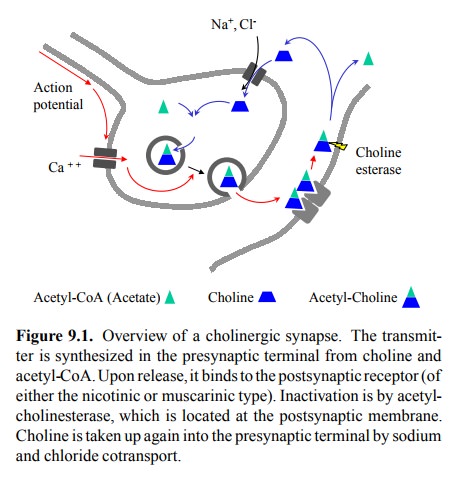Chapter: Biochemical Pharmacology : G protein-coupled receptors
Pharmacology of cholinergic synapses
Pharmacology of cholinergic
synapses
As we have seen [in a
previous chapter], acetylcholine oc-curs in synapses in both the somatic and
the autonomic ner-vous system. The nicotinic acetylcholine receptor is found in
the motor endplate of the skeletal muscle, and in both the sympathetic and the
parasympathetic ganglia of the periph-eral autonomic system. Muscarinic
acetylcholine receptors are found at the endings of all secondary neurons
within the parasympathetic part of the peripheral autonomous system. In
addition, acetylcholine receptors of both types also oc-cur in the brain. Drugs
with a useful degree of selectivity for each of these targets are available and
used in practical medicine. Selectivity is based on two principles:
1. Receptor type and subtype specificity of
agonists or antagonists, and
2. Exclusion by the blood brain barrier of drugs
intended for peripheral action.
One
particular feature of cholinergic synapses is the mode of transmitter
inactivation. While with most transmit-ters this is accomplished by presynaptic
transmitter re-uptake, acetylcholine is cleaved extracellularly by
acetyl-cholinesterase. This enzyme is located on the postsynaptic membrane,
right next to the receptors (Figure 9.1). Its ac-tivity is very high, so that
the rate-limiting event in acetyl-choline inactivation is not cleavage but
dissociation from the receptor. Besides the direct receptor agonists and
an-tagonists, blockers of cholinesterase (also referred to as `in-direct
agonists') are an additional class of drugs that will modulate the
effectiveness of transmission in cholinergic synapses.

Related Topics